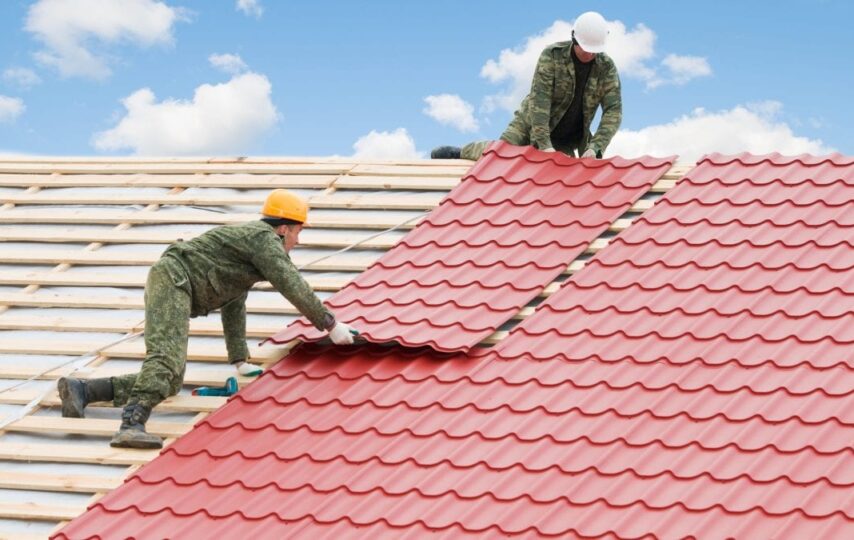As someone who owns a home, maintaining your house and ensuring it remains up to code at all times is amongst your most important responsibilities. Like most investments in life, all homes necessitate upkeep as years pass to provide maximum comfort and security. If you’ve lived in your home for fifteen years or more, there’s a strong chance you have considered investing in a roof replacement. However, before jumping to the decision to replace your roof entirely, there are some warning signs to watch for to figure out whether or not the time is proper for you and your property.
Right off the bat, on your undertaking to understand roofing, you’ve more than likely crossed the “25-30 year rule” for replacing your roof. That number is utilizied as a benchmark. The majority of residential roofs need a replacement during that timeframe. But, there are many factors at play, and not any roof is the same.
Your roof takes a substantial amount of external wear and tear throughout each passing year. Persistent sunlight, powerful winds, debris, rodents, tropical storms, rain, or destructive weather conditions – all of these have a direct effect on a roof’s lifetime. How quickly your roof needs to be replaced depends on many things:
What kind of weather is experienced.
Yearly maintenance and preservation.
Age of the materials.
Quality of the materials.
How well it was installed in the first place.
Upkeep with minor repairs.
Keeping pests and rodents away.
External debris buildup.
Your Roof Is A Few Decades Old
One of the first things to consider prior to inspecting your roof for cracks, breaks, and other issues is its age. A roofing system that is 15-20 years or more may require a complete replacement, even if the roof itself seems in good shape from the naked eye. Older roofs were often created with materials no longer in use or considered durable by today’s standards. Suppose your roof is closing in on 20 years old. In that case, it may be time for a complete inspection and potentially investing in a whole new roof altogether, and definitely, if your roof has overlayed a previously installed roof.
Perform An Interior Roof Check
The first and easiest way to evaluate your roof’s condition is to grab a flashlight and head up to your attic. Ensure to grab a flashlight with a bright beam so you don’t miss any damage, and always take proper safety protocols as you perform these types of inspections.
Once you are in your attic, try to identify one (or several) of these 4 signs that you need to replace the roof:
1) Daylight Through The Roof Boards
Before you turn your flashlight on, see if you can notice any streams of light coming through cracks or punctures in your roof. If you do spot any light shining through your roof, repair or replace your roof right away. If the light is shining through your roof, then water is also leaking into your roof.
2) Dark Streaking & Stains
This one is also extremely easy to uncover. If there are dark stains or dark streaks on the underside of your roof or running down the walls from the base of your roof, then your roof is probably leaking, and moisture is damaging both your roof and your home’s interior structure.
3) Sagging Areas
In the same way that water will make a piece of cardboard soggy and weak, water can also make the structure of your roof start to sag. If you discover sagging portions of your roof, use your hand or a broom to carefully prod at the sagging spot. If the spot feels soft and wet or bends easily with a touch of your stick, then you are 100% dealing with water damage.
4) Leaks
Besides just searching for dark streaks and sagging spots, be sure to look for any clear indications of water leaking or rotting your roof on the inside. If you spot any clear signs of water damage, you should immediately contact someone to inspect your roof.
Curling Or Missing Shingles Are Visible
Taking a look at your roof’s shingles is another recommendation to iron out whether or not your roof requires further attention or a possible roof replacement entirely. While inspecting the outdoor shingles on your home’s roof, be on the lookout for any cracks, misshapen shingles, or shingles that have curled or bent upwards.
Shingles that are curled, cracked, or misshapen may necessitate a deeper inspection to identify whether or not they must be replaced individually or if the smarter choice is investing in a re-roof.
Finding tiny granules throughout your roof or piling up in your gutter can also indicate that the moment is here for a complete and thorough roof replacement. Excessive asphalt granule loss is a surefire sign that the roof’s condition is not where it needs to be to ensure maximum protection and insulation for your home.
Excessive Growths On Your Roof
Dark spots (or generally dirty-looking shingles) are caused by fungus and algae growth. These might not be directly tied to how often you need to replace your roof (or that it needs repair), but these fungi can spread and cause unnecessary damage to other areas of the roof.
Is there moss or other types of nature growing on top or out of your roof? If so, don’t worry. Nature has a tendency to grow over any structure in its path if it is not properly looked after and maintained.
When looking over your roof and the moss you have spotted, make sure to do so by inspecting both the inside and outside of your roof. While the majority of plant growths are likely to be seen from the outside of your roof, when there’s a more serious issue at hand, nature may also be growing on its own inside the house without your knowledge.
Most of the time, eliminating the growths from a roof is a way to rapidly fix the problem without even having to consider a re-roof. However, if you notice substantial growths on your roof or inside the property, the recommendation is to call a roofing company to determine the root cause and reason for the growth.
In the event the roof is just totally overgrown, then the sole course of action would be to get a new roof; this mostly happens to roofs that are unattended for long periods of time.
The good news is, natural growth and buildup aren’t usually a sign that you must fix or replace your roof. Rather, algae is more of just an eyesore on your roof and one that is quite common in humid geographic regions.
If the situation calls for a new roof installation, there then becomes a number of decisions in the near future. Beginning with the roofing material to use, will you stick with asphalt or consider metal? Which residential roofing contractor to work with? Whether there’s a valid insurance claim. For many homeowners having the cash on hand to get a roof replacement may not be a possibility; there are financing options accessible for qualified homeowners offered by most reputable roofing contractors. Ensure to do due diligence prior to choosing a roofing company.



